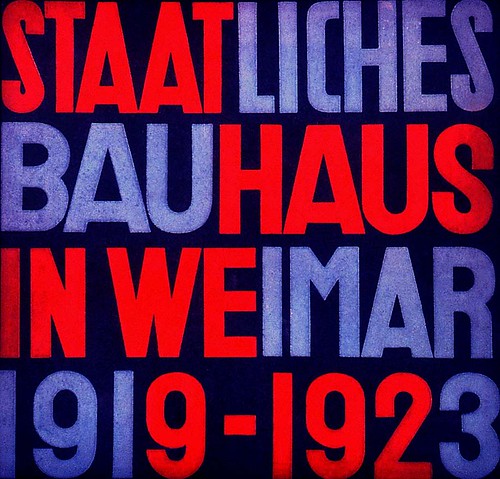- Architects want to move closer to the centers of power
- Torre Bicentenario in Mexico City by OMA
- Next in Green Building: Water Walls
- Tower to the People: A campaign to reopen the Post Office Tower to the public
- Polish builders create topsy-turvy house
- A Green Zone arrives in Sydney: Caged Politicians and the Lo-Fi-ing of Sydney; Great, the week I plan to visit Sydney, the whole city will be shutting down
- Sydney must be on my mind: The View – or –
On seeing A Proper Skyline for the first time
Category: General
Strike cripples London Underground
Gare do Oriente
 east to west, originally uploaded by hugo n.
east to west, originally uploaded by hugo n.
Gare do Oriente (additional photos) in Lisbon, Portugal by Santiago Calatrava.
Resident curators restore public properties in return for rent-free living
 Darren Higgins for The New York Times
Darren Higgins for The New York Times
We’re people of modest means,” said Darrold Endres, a nursing home administrator who has been living in and restoring an 1860s farmhouse near Boston with his family for 12 years. “We could not afford to live in an incredible spot like this, in a town with wonderful public schools for the girls, if not for the curatorship program.”
Programs like the one in Massachusetts have come about because many state governments own more houses of historical interest than they can afford to maintain, mainly on farms acquired decades ago and converted to parkland. Now a few states have begun turning these properties, along with some of the surrounding land, over to live-in curators, who take on restoration responsibilities in lieu of paying rent or taxes.
For more information, see the following State programs:
Underwater Power in Ireland
 The SeaGen project will see two underwater tidal turbines installed off the coast of Northern Ireland (Image: Marine Current Turbines)
The SeaGen project will see two underwater tidal turbines installed off the coast of Northern Ireland (Image: Marine Current Turbines)
By the end of the year, twin underwater turbines should be generating 1.2 megawatts of electricity off the coast of Northern Ireland in a landmark demonstration of tidal power technology.
Marine Current Turbines, a company based in Bristol, UK, had hoped to begin installing the turbines at Strangford Lough (Google map) on Monday, but the construction barge scheduled to deliver the turbines was delayed. A company spokesman says the installation will now take place later in 2007. It will be the world’s largest tidal power project.
Bauhaus Design
 Bauhaus Design 4, originally uploaded by Alki1
Bauhaus Design 4, originally uploaded by Alki1
Bauhaus catalog cover designed by Herbert Bayer. Bauhaus archives.
Children, Helvetica did not come onto the type market until 1957, designed by Max Miedinger and as I remember, it was originally called Haas New Grotesk, based on Akidenz Grotesk, a san serif designed in 1896 (and still used today in various versions). It was a product of the Haas typefoundry, a Swiss company, but was later picked up by another foundry and named Helvetica. It came out in the US around 1961, and the local printing company just bought the face in 8, 10, and 12 point cast type and that was when I was first introduced to it. I worked with a graphic designer who also designed type who drew up a large size of Helvetica and then had it printed. I would get an assigment [sic] from other designers who needed Helvetica headings and other large type projects. I got a dollar a word for pasting up Helvetica until the foundries came out with a larger selection of Helvetica type sizes.
See also, Bauhaus Design Set.
Neural Net, IMEC 1989 d
 Neural Net, IMEC 1989 d, originally uploaded by mr prudence
Neural Net, IMEC 1989 d, originally uploaded by mr prudence
See also Space Colonies: The High Frontier where science fiction and reality superficially meet.
Front St & Peck Slip, NYC
 Towers in Fog B&W, originally uploaded by Goggla
Towers in Fog B&W, originally uploaded by Goggla
HDR Tower with nice Sky
 HDR Tower with nice Sky, originally uploaded by Jakob.Montrasio.Net
HDR Tower with nice Sky, originally uploaded by Jakob.Montrasio.Net
Interchange tiles
 Interchange tiles, originally uploaded by jim.r
Interchange tiles, originally uploaded by jim.r
This is a set of 25 ceramic tiles. The patterns are based on satellite imagery of major highway interchages that have been built worldwide. These interchanges are some of the most expensive public works projects that take place- which we simply take for granted. However, as seen from space they are beautifully complex and graceful. Materials: 15″ x 15″ white ceramic tiles with black glaze. The set includes of the largest interchanges worldwide.
 Interchange Tiles Installed by Jim TerMeer
Interchange Tiles Installed by Jim TerMeer
Interchange tiles by Jim TerMeer